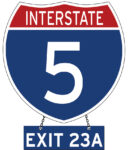 Editor’s Note: This is the fifth chapter in Volume 2 of Editor Emeritus Donald H. Harrison’s 2022 trilogy, “Schlepping and Schmoozing Along the Interstate 5.’ All three books may be purchased from Amazon.com, or at any of the lectures that Harrison delivers to groups around the county. Harrison may be contacted via donald.harrison@sdjewishworld.com
Editor’s Note: This is the fifth chapter in Volume 2 of Editor Emeritus Donald H. Harrison’s 2022 trilogy, “Schlepping and Schmoozing Along the Interstate 5.’ All three books may be purchased from Amazon.com, or at any of the lectures that Harrison delivers to groups around the county. Harrison may be contacted via donald.harrison@sdjewishworld.com
Schlepping and Schmoozing Along the Interstate 5, Vol. 2; Exit 23a (Grand/ Garnet Avenues): Rose Canyon, Rose Creek
From northbound Interstate 5, take Grand/ Garnet Avenues exit and turn left; merge onto Mission Bay Drive; Follow signs to Garnet Avenue, and cross over Rose Creek. A landmark is the Rose Creek Cottage at 2525 Garnet Avenue.
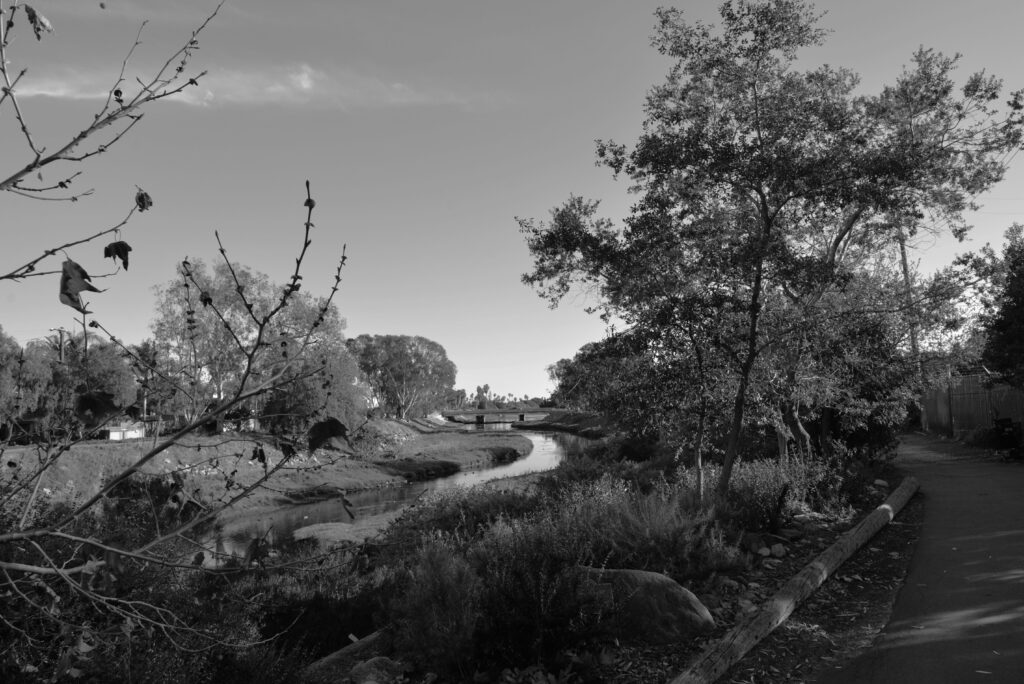
 SAN DIEGO — A short distance west of Exit 23A (Grand Avenue/Garnet Avenue) is the intersection with Rose Creek, a stream that may be viewed from either side of the road. The Rose Creek Cottage, a San Diego landmark, is a favorite place for wedding receptions and other family events. Rose Creek runs through Rose Canyon, which is known to seismographers as the site of the Rose Canyon Fault. The canyon, the creek, and the fault are not named for the rose flower. These locations are named for Louis Rose, who in 1850 became San Diego’s first Jewish settler. In 1853, Rose purchased at public auction 800 acres in the area that was then known as La Cañada de las Lleguas (Canyon of the Mares) for $1,066, or slightly more than $1.22 an acre.
SAN DIEGO — A short distance west of Exit 23A (Grand Avenue/Garnet Avenue) is the intersection with Rose Creek, a stream that may be viewed from either side of the road. The Rose Creek Cottage, a San Diego landmark, is a favorite place for wedding receptions and other family events. Rose Creek runs through Rose Canyon, which is known to seismographers as the site of the Rose Canyon Fault. The canyon, the creek, and the fault are not named for the rose flower. These locations are named for Louis Rose, who in 1850 became San Diego’s first Jewish settler. In 1853, Rose purchased at public auction 800 acres in the area that was then known as La Cañada de las Lleguas (Canyon of the Mares) for $1,066, or slightly more than $1.22 an acre.
Long before San Diego had become a California city, seafarers knew San Diego as a place where cow hides could be purchased at San Diego Bay from ranchers who stored them at La Playa and on a small peninsula known as Ballast Point. The explorer and sailor Richard Henry Dana, who arrived in 1835, described San Diego hide houses in his book Two Years Before the Mast. Hides were nicknamed “California dollars” as they were utilized as a form of currency to pay for merchandise the trading ships brought with them. In those days before the construction of the Panama Canal, the hides were often carried from San Diego around the southern tip of South America and then up to East Coast leather factories. Afterwards finished leather goods, such as shoes, belts, and saddles would be brought back around the tip of South America and up the West Coast to be sold to consumers. Rose realized that if he could build his own tannery, all those shipping costs could be eliminated. He could sell leather goods to local consumers at a much better price than the East Coast manufacturers and still make a tidy profit.
Because a creek ran through La Cañada de las Lleguas, Rose deemed it a perfect site for his tannery; soaking hides is one of the first steps in the tanning process. Rose persuaded his nephew Nisan Alexander, who had experience in the tanning business, to come to San Diego to head this business. Not wishing to waste any parts of the cows whose hides would be tanned, Rose also opened a butcher shop in Old Town, to which he devoted much of his time.
In 1854, Rose ran an enthusiastic advertisement for the tannery: “Leather! Leather!” the headline read. “The subscriber having at great pains and expense perfected one of the most extensive tanneries in California, is now prepared to furnish the people of the southern counties with sole, harness and saddle leathers in the best description and at reasonable prices. These leathers are tanned in the best manner (without use of hot liquids) and will be sold, for the present, for the following prices for cash only: Saddle and harness leather, according to thickness, from 60 to 65 cents. Sole leather 50-cents … Particular attention will be paid to the filling of orders, as it is determined if possible to give perfect satisfaction.”
The editor of the San Diego Herald endorsed Rose’s tannery: “We inspected a specimen of home manufacture a day or two since the tanning and leather manufactory of Lewis [sic] Rose, esq.: which is situated (as everyone knows, or ought to know, and pay it a visit too) about five miles from town, on the road to Los Angeles. This leather is tanned and finished in the most thorough and complete manner and equals the best articles in the markets of Philadelphia and Boston. The establishment is now being increased in capacity for production by the enterprise of its proprietor, and when fully expanded, will give employment to a large number of men who, with their families, cannot fail to create a large settlement at the place now known as Rose’s Ranch, but destined to bear the title Roseville whenever it should reach the dignity of townhood.”
The editor’s crystal ball was a little clouded. Whereas a townsite called “Roseville” would arise in 1869 in San Diego through Rose’s enterprise, it would be located on San Diego Bay. The area that the editor called “Rose’s Ranch” became known first as “Rose’s Canyon” and later simply as Rose Canyon.
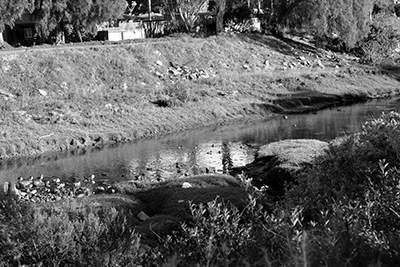
Rose eventually expanded his holdings to 1,920 acres, but his plans to expand the tannery as a commercial enterprise sadly were put to an end by the death of his nephew Nisan somewhere outside of San Diego County. Benjamin Hayes, a California district court judge who was an inveterate traveler and diarist, described the distraught Rose’s canyon property as having “a new frame house, in good order; a garden of four acres, with a stone fence five feet high … He had grape vines growing freely, but they have been neglected. He has raised excellent tobacco … Digging eight feet, water is plenty; but on most parts of the rancho, sufficient water is obtained at the depth of three feet or less. Live creeks flow through it during the rainy season, and for months after many springs make large ponds from two to three feet deep. And there is ample pastorage. At present, he has only 20 head of cattle and 100 horses and mules. There is enough of sycamore and willow to fence ten miles square and very little oak.”
Concerning the tannery itself, Judge Hayes observed: “It is only one of the various charming features of Rose’s Rancho. There is no other tannery in the county. There are 20 bark vats, six lime and water vats, two capable of containing 500 gallons each; a new bark mill, an adobe house, for curing the leather. Each vat will contain some 800 to 100 sides. There are force pumps and everything else, complete. He now makes 3,000 sides per annum and 1,000 skins of deer, goat, sheep, seal and sea lion. Many goats have been brought to him from Guadalupe Island (where goats abound) … off the coast of Lower California. Seals are abundant off our own coast. Last year, he sold $8,000 worth of leather at San Franciso. It was much praised there. Oak bark is obtained 10 miles from the tannery, in abundance, at from $12 to $15 per ton–delivered. He employs head tanner, at $100 per month; two assistants at $35 each per month; three laborers, each at $10 per month, boarding them. Indian laborers command $8 per month; Mexicans at $10, both classes are easily got here. Hides are readily obtained to keep the tannery always in operation. He trades for them a good deal with shoes, saddles and botas which are made of his own leather. Deer skins, goat & bear the standing price of $3 apiece. Today I found him busy, cutting old soles and uppers, because he had little else to do; the uppers were of deer skin. These are manufactured by a Mexican shoemaker, according to Mexican style. They will do well in dry weather.”
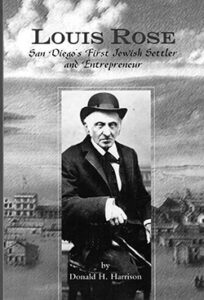
Rose had an endearing love of animals, most especially the Galapagos Tortoise that he had named “Chili.” Describing the animal, Hayes said it “weighed when brought here 35 pounds, now 100 pounds. We presented it a slice of bread; it quietly snapped off a piece. Hens and little chickens gathered around for a share, even picking at the crumbs in its mouth — to all which he paid no attention. Then the cook put a piece of pancake in its mouth. A little pet dog helped himself to part. It merely raised up high on its feet, to let the dog play beneath … Rose has a great fondness for pets. I saw him go up and kiss a mule the other day.”
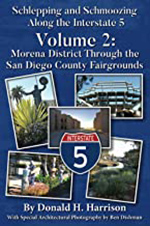 Chili and the little dog pat were favorites of the children of San Diego who would visit Rose at his ranch. Sometimes they would ride on Chili’s back. Pat would bark excitedly at the children and other humans, but if they approached him, he’d take cover under Chili. Seeing the three walking together — Rose, Chili and Pat — was always quite a sight.
Chili and the little dog pat were favorites of the children of San Diego who would visit Rose at his ranch. Sometimes they would ride on Chili’s back. Pat would bark excitedly at the children and other humans, but if they approached him, he’d take cover under Chili. Seeing the three walking together — Rose, Chili and Pat — was always quite a sight.
In 1860, Rose, who made and lost fortunes during his lifetime, was $27,416.67 in debt to Lorenzo Soto. To pay the debt, Rose turned over Rose Canyon and some other properties, including his butcher shop in Old Town, to Soto. In 1864, having financially recovered, Rose repurchased the butcher shop from Soto, but left the canyon in Soto’s hands. Notwithstanding whoever actually owned the property, it continued to be known as Rose Canyon even to today.
*
Donald H. Harrison is editor emeritus of San Diego Jewish World. He may be contacted via donald.harrison@sdjewishworld.com